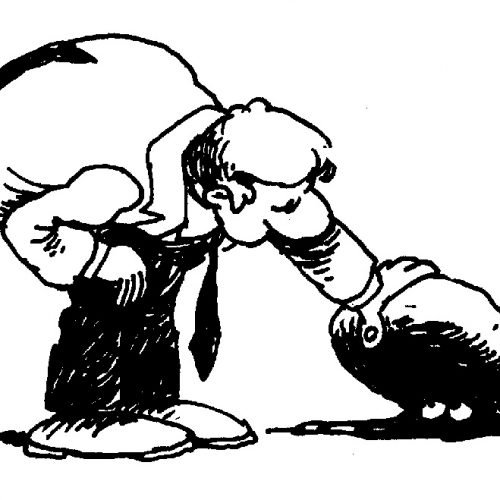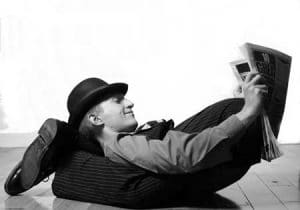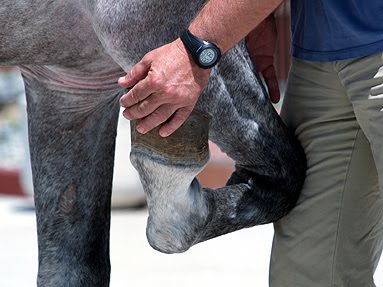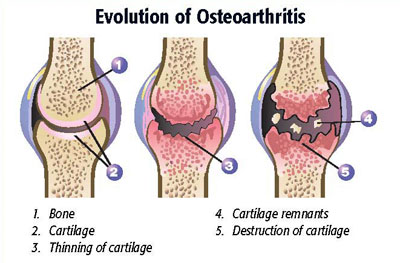There seems to be a growing trend in horse medicine. It’s a trend towards incorporating physical therapy “specialists” into horses that are recovering from injuries.
And I’m not at all sure how good a thing that really is, at least when it comes to outcomes.
Just to be clear, I’m not suggesting that after a horse incurs some sort of an injury that it’s not important that he go through a period of rest and rehabilitation. So, for example, if a horse injures a tendon or a ligament, I think that it’s very important to take your horse through a rehabilitation protocol (which I wrote about). If your horse needs to strengthen the muscles of his hind end, there’s nothing like riding him up and down hills. But what I am wondering about is the need to routinely get a lot of “specialists” involved in helping your horse recover from injury.
When I first started practice, rehabilitation from horse injuries mostly consisted of leaving a horse a lone for a while. Maybe you’d turn him out into a pasture. If it was a mare, maybe you’d breed her – let her carry the foal for 11 months – and then see how she was after the baby was weaned. But six months, or a year, or maybe a bit more later, you’d come back and look at the horse and see how things were. Miraculously (or not) most of the time the horses got better, and were ready to go.
Ah, the simple days of yesteryear. While it’s certainly not always a good idea just to turn your horse out after an injury, sometimes…. there’s nothing like a bit of pasture therapy.
 Anyway, today, if you’re a horse, recovering from an injury can be a lot more involved. You can be lasered and massaged and adjusted and aquatreaded and body worked and kinesiotaped and injected and magnetized and shockwaved and vibrated and hyerbarically oxygenated and pulsed and ultrasounded and bandaged and heated up and cooled down and “supported” and who-knows-what-else. For many horse owners, if a horse hurts himself, not only is the recovery a lot more complicated, but it’s a lot more expensive, too. And after all of this stuff – as well as six months, or a year, or maybe a bit more later – you come back and look at the horse and see how things are. Miraculously (or not) most of the time the horses get better and are ready to go.
Anyway, today, if you’re a horse, recovering from an injury can be a lot more involved. You can be lasered and massaged and adjusted and aquatreaded and body worked and kinesiotaped and injected and magnetized and shockwaved and vibrated and hyerbarically oxygenated and pulsed and ultrasounded and bandaged and heated up and cooled down and “supported” and who-knows-what-else. For many horse owners, if a horse hurts himself, not only is the recovery a lot more complicated, but it’s a lot more expensive, too. And after all of this stuff – as well as six months, or a year, or maybe a bit more later – you come back and look at the horse and see how things are. Miraculously (or not) most of the time the horses get better and are ready to go.
So my question is, given the amount of time, and the fact that the outcomes tend to be the same, that is, the horses tend to get better (or not) no matter what you do to them, how is it that we know that all of this heartfelt expertise and mysterious machines with lights, waves, pulses, etc., that are being applied to horses in so many ways is actually doing any good?
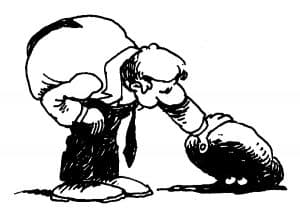 And the answer is, “We pretty much don’t.” That is, if you are looking for good scientific evidence of effectiveness for the seemingly limitless number of approaches to providing physical therapy that are offered to horse owners, you’re going to have a hard time finding any. That’s not to say that they necessarily don’t do any good, just that the claims made far outpace evidence for their effectiveness.
And the answer is, “We pretty much don’t.” That is, if you are looking for good scientific evidence of effectiveness for the seemingly limitless number of approaches to providing physical therapy that are offered to horse owners, you’re going to have a hard time finding any. That’s not to say that they necessarily don’t do any good, just that the claims made far outpace evidence for their effectiveness.
This mad rush of folks into physical therapy for horses (and small animals, too!) is probably an inevitable overflow from the human physical therapy world. If you’ve ever had an injury, it’s probably as likely as not that your doctor prescribed a course of physical therapy for you. In fact, when my younger son was growing up, it happened to him. His knees were hurting, he went to a sports medicine specialist, got some special orthotics in his shoes, and then went for a course of physical therapy (more on that in a bit).
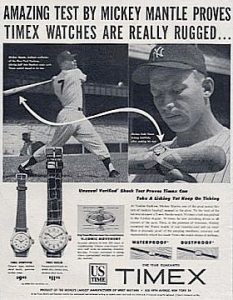 ASIDE: Ever twist your ankle, tweak your elbow, wrench your shoulder, or get a sore neck and not get physical therapy? How’d that turn out for you? Speaking only for myself, and having done all of those, and never having seen a physical therapist… everything’s worked out great. To quote the old Timex® commercial, you “Take a licking and keep on ticking.”
ASIDE: Ever twist your ankle, tweak your elbow, wrench your shoulder, or get a sore neck and not get physical therapy? How’d that turn out for you? Speaking only for myself, and having done all of those, and never having seen a physical therapist… everything’s worked out great. To quote the old Timex® commercial, you “Take a licking and keep on ticking.”
But back to science. Turns out that when you start looking for outcomes data, that is, data that compares where people end up after having physical therapy for an injury to those that didn’t have physical therapy, the picture gets really cloudy. Here’s what I mean.
In 2016, the prestigious British Medical Journal looked at 503 patients aged 16 and up who presented to urgent care centers with simple ankle sprains. Some of those folks got up to eight physical therapy visits and some exercises to do at home. Those that didn’t get to see the physical therapist got “usual care,” that is, they got told to rest the ankle, put ice on it, use compression bandages: pretty much the exact same sorts of things that people often do on their own for their horses’ injuries. And what happened?
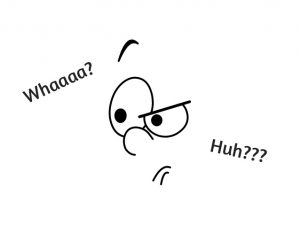 Of course, this is just one study. I’ll be the first one to say that one study is usually not something that you want to hand your hat on. To be complete, you should really see what other studies looking at the same question(s) say. So….
Of course, this is just one study. I’ll be the first one to say that one study is usually not something that you want to hand your hat on. To be complete, you should really see what other studies looking at the same question(s) say. So….
AND,,,,
AND…
 If you go out longer, looking at folks who have had ankle sprains and supervised exercises for a whole year, compared to those that didn’t get such care, those that had the supervised exercises weren’t any better than those who didn’t.
If you go out longer, looking at folks who have had ankle sprains and supervised exercises for a whole year, compared to those that didn’t get such care, those that had the supervised exercises weren’t any better than those who didn’t.
AND…
IN FACT…
A review of 7,946 articles on soft tissue injuries of the human leg, ankle, and foot, “Found little evidence to support the use of early or supervised exercise interventions for lateral ankle sprains.” Seriously, that’s a lot of articles.
To me, this sort of information is perplexing. I’m quite sure everyone went into these interactions with the best of intentions, but it just seems that they don’t make any difference. At least for ankle sprains – of course, it’s always important to look for information on specific conditions, and not necessarily just throw the whole physical therapy baby out with the bath water.
FOLLOW-UP ASIDE: After suffering with knee pain for almost five years, my son’s knee pain went away when he grew out of it. None of the treatments, PT, etc., made any difference, even though they were earnestly delivered with compassion and concern. He’s a triathlete now, and has never looked back.
“So what about horses?” you ask.
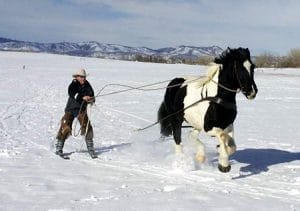 It seems to me that the biggest problem that some people have after injury is that they may sit around. That is, due to pain, difficulty getting around, or even psychological reasons, some people after injury may not choose to try to get moving again. In such circumstances, I can perhaps see the value in having a place to go and a task to do. It’s the same reason that going to the gym seems to motivate some people who could otherwise achieve the same level of fitness by working out at home.
It seems to me that the biggest problem that some people have after injury is that they may sit around. That is, due to pain, difficulty getting around, or even psychological reasons, some people after injury may not choose to try to get moving again. In such circumstances, I can perhaps see the value in having a place to go and a task to do. It’s the same reason that going to the gym seems to motivate some people who could otherwise achieve the same level of fitness by working out at home.
Horses – well, any animal – are another thing entirely. The biggest problem in dealing with horses recovering from injury is getting them to not exercise. These are animals that are constantly on the go – in the wild, did you know that horses move 20 – 50 miles every day? – and they don’t let little things like tendon injuries or joint sprains or back problems get in the way of wanting to move. That’s why dealing with laid up horses is such a joy, and even the engine for entirely new sporting events, such as barn skiing (those of you that have been towed around by a laid up horse know exactly what I’m talking about).
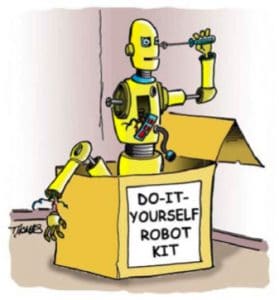 Once again, I’m not advocating not paying attention to how your horse is doing after an injury. Quite the contrary. I think it’s very important that you monitor your horse after an injury, and put him a situation where he is likely to get better (assuming that he can get better). And if you’re inclined to get some help, and if you enjoy various machines and devices and such, then by all means, have at it. Just understand two things:
Once again, I’m not advocating not paying attention to how your horse is doing after an injury. Quite the contrary. I think it’s very important that you monitor your horse after an injury, and put him a situation where he is likely to get better (assuming that he can get better). And if you’re inclined to get some help, and if you enjoy various machines and devices and such, then by all means, have at it. Just understand two things:
- You can do a lot of this yourself – icing, controlled exercise, bandaging, etc.
- At the end of the day, the outcomes may not be much different anyway
Back in 2006, in a review article on physiotherapy for horses (Buchner, HH and Schildboeck, Equine Veterinary Journal, 2006; 38(6): 574 – 80), it was noted, “Reviewing the experimental and observational scientific literature on equine physiotherapy revealed a frustratingly small number of reliable studies offering sufficient evidence for clinical efficacy.” That’s still the case today.
After a horse has hurt himself, everyone wants him to get better. It seems like everyone wants to help. And that’s all good. But good intentions and good results don’t necessarily go hand in hand, and, in my opinion, there’s no reason to pay for stuff that’s not likely to do any good. The most expensive medicine is not necessarily the best medicine.
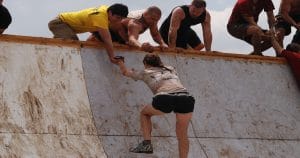 By all means, take good care of your horse after he’s hurt himself. Work closely with your veterinarian, and if you feel so-inclined, there’s likely to be little harm from incorporating some supervised physical therapy. But your horse going to be better off afterwards? Otherwise stated, is all the extra attention doing any good? Well, those are other questions entirely.
By all means, take good care of your horse after he’s hurt himself. Work closely with your veterinarian, and if you feel so-inclined, there’s likely to be little harm from incorporating some supervised physical therapy. But your horse going to be better off afterwards? Otherwise stated, is all the extra attention doing any good? Well, those are other questions entirely.

